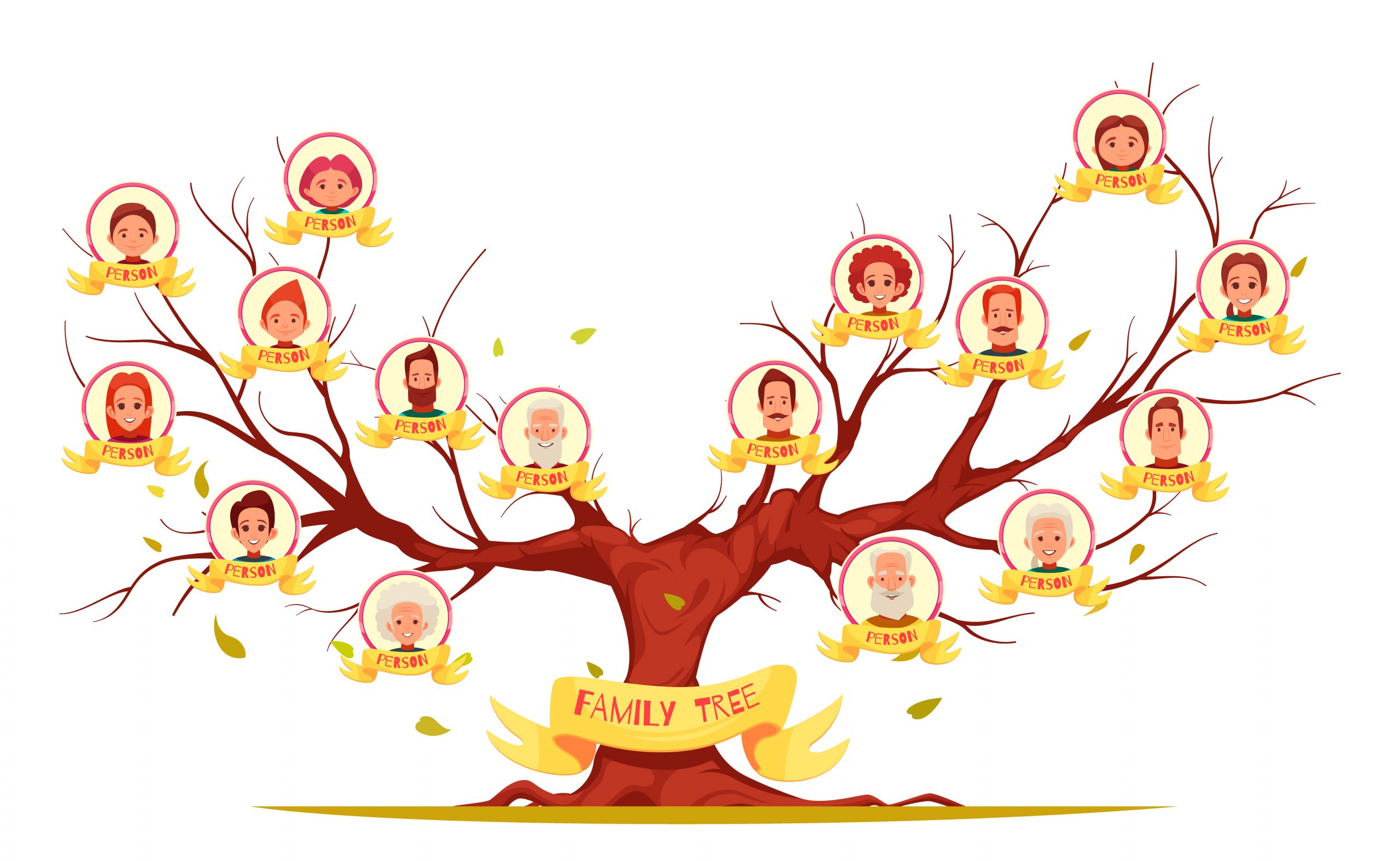👨👩👧👦Arabic Level 2, Activity 02: “شَجَرَة العَائِلة / Family Tree” (Face-to-Face/Online)

Tree vector created by macrovector
Description:
In this activity, students will focus more on giving and completing a task. Students will be doing their family tree, then will ask and answer each other’s questions about families.
Semantic Topics:
أفراد العائلة، أم، أب، جدّة، جَد، أُخت، أخ، قريب، عمة، عم، حفيد. family tree, mother, father, brother, sister, grandmother, grandfather, uncle, aunt, cousin, nephew
Grammatical Structures:
Descriptive adjectives, possessive adjectives
Products: Family Tree, relatives, greeting between relatives.
Practices: Middle Eastern culture is so diverse when it comes to greetings. Generally, to show extreme respect for the eldest family member/parents, the greeting would be kissing their head or shaking only their right hand and kissing one hand, but it is not acceptable for a male to kiss a female in this manner if they are not related. Same age or younger people, it is only shaking hands or two kisses on each cheek. However, if you were a male, shaking a female’s hand is not appropriate unless she outstretched her hand first.
Perspectives: Why is a family very important in Middle Eastern cultures?
- Standard 1.1: Students engage in conversations or correspondence in Arabic to provide and obtain information, express feelings and emotions, and exchange opinions.
- Standard 1.2: Students understand and interpret spoken and written Arabic on a variety of topics.
- Standard 4.1: Students demonstrate an understanding of the nature of language through comparisons of Arabic and their own languages.
Idaho Content Standards for World Languages:
- COMM 1.1: Interact and negotiate meaning (spoken, signed, written conversation) to share information, reactions, feelings, and opinions.
- COMM 2.1: Understand, interpret, and analyze what is heard, read, or viewed on a variety of topics.
- COMP 1.1: Observe formal and informal forms of language.
- COMP 1.2: Identify patterns and explain discrepancies in the sounds and the writing system in the target language.
NCSSFL-ACTFL Can-Do Statements:
- I can introduce my family tree to others.
- I can ask someone about their family.
- I can answer specific questions about my family.
Materials Needed:
Warm-Up
- Pull up the Slideshow and introduce the Can-Do’s for the activity.
افتح العرض وشارك شاشتك مع الطلاب، واقرأ شريحة can_do
2. Introduce the Simpsons family to students and ask them the questions on the slide.
عرف الطلاب بعائلة سيمبسونر واسئلهم التالي: (كم ابن لدى عائلة سيمبسونز؟ – كم ابنة لدى عائلة سيمبسونز؟ – كم فرد بالعائلة؟ )
3. Next, move to the next slide and read through the family members’ names in Arabic. Encourage students to read!
انتقل الى شريحة #8 واقرأ افراد العائلة بالعربية، شجع الطلاب ليقرأو ايضاً.
4. Remind them that these are the vocabulary words they are going to use in the main activity.
ذكرهم ان هذه المفردات سيستخدمونها في التمرين الاساسي.
Main Activity
- Go through the royal family tree and introduce it to students, and ask them the questions on the slide.
ماهي علاقة الأمير وليام بالدوقة ميغان؟ماهي علاقة أبناء الأمير وليام والدوقة كاثرين بالأمير تشارلز؟ ما هي علاقة أبناء وليام وكاثرين بإبن ميغان وهاري؟
- Next, students will share their own family tree. (They can write the actual names of their family members if they wish, or they can make a fake one).
الآن سوف يشارك الطلاب شجرة عائلتهم، يمكن أن يستخدمو اسمائهم الحقيقة أو اسماء مستعارة
3. After 5 minutes, students will ask each other questions such as: What is your mother’s name? How many siblings do you have? Who’s your favorite family member?
بعد ٥ دقائق اطلب منهم ان يسألو بعضهم هذه الاسئلة:
What is your mother’s name?
How many siblings do you have?
Who’s your favorite family member?
Wrap-Up
- Ask the following questions: What did we learn about each other’s families? Who has the most siblings?
اطرح الأسئلة التالية: ماذا تعلمنا عن عائلات بعضنا البعض؟ من لديه أكبر عدد من الأشقاء؟.
2. Slide the culture slide, and read what families are like in Middle Eastern culture with students. Explain some of the cultural differences between families in the Middle East in comparison to students’ own family life.
مرر شريحة الثقافة واقرأ مع الطلاب كيف تبدو العائلات في ثقافة الشرق الأوسط. اشرح بعض الاختلافات الثقافية بين العائلات في الشرق الأوسط مقارنة بالحياة الأسرية للطلاب.
3. Then, ask them if they have any questions.
ثم اسألهم إذا كان لديهم أي أسئلة.
Culture!
The family gathering is significant in middle eastern culture. They usually gather at the grandparents’ house on weekends to have lunch or dinner, sometimes both.
-
- This can also take place on holidays like Eid and Ramadan.
End of Activity
- Read Can-Do statements once more and have students evaluate
their confidence.
(Use thumbs up/thumbs down or download our student cards.) - Encourage students to be honest in their self-evaluation.
- Pay attention, and try to use feedback for future activities!
NCSSFL-ACTFL Can-Do Statements:
- I can introduce my family tree to others.
- I can ask someone about their family.
- I can answer specific questions about my family.

